One way of learning is by using music. Students are having fun practicing and listening to a song about colors.
Some students are busy practicing writing down words, and others are practicing the numbers.
One way of learning is by using music. Students are having fun practicing and listening to a song about colors.
Some students are busy practicing writing down words, and others are practicing the numbers.




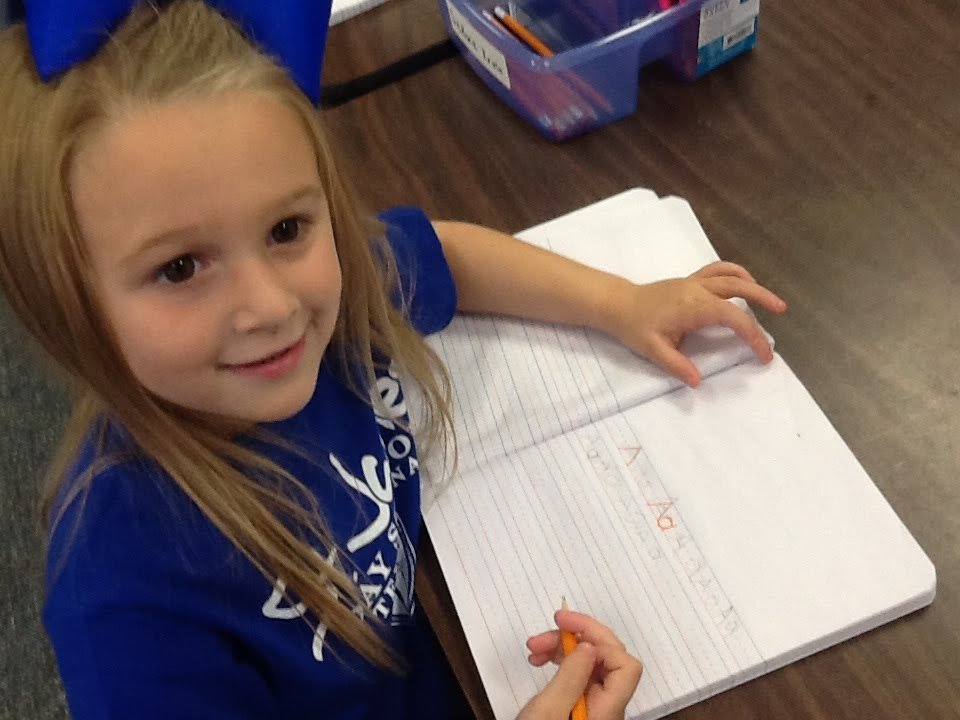

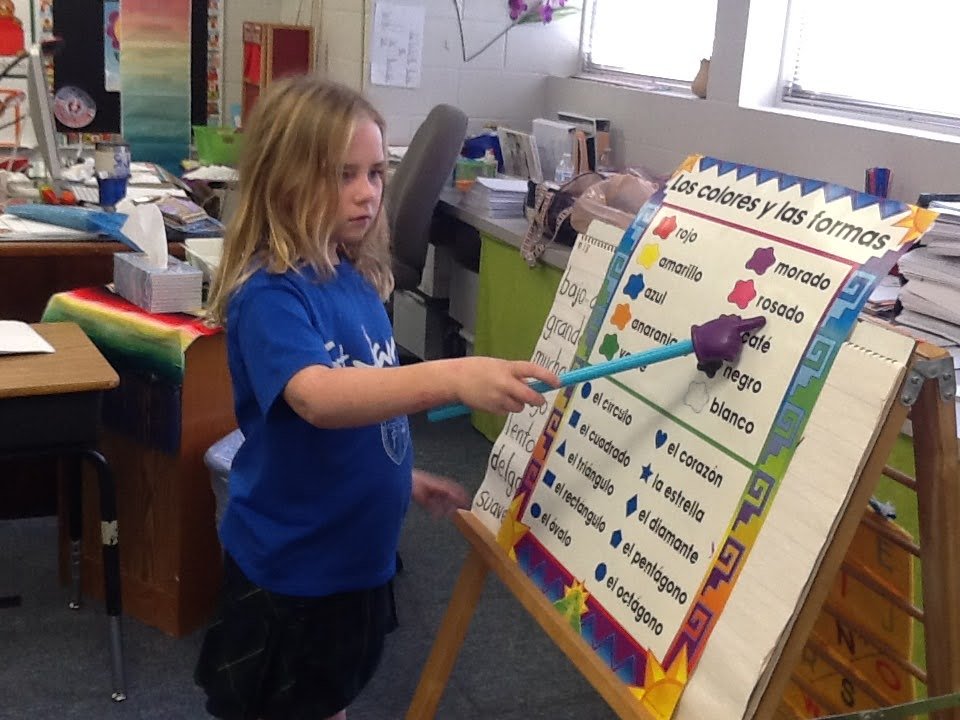

Students are happily learning in groups and engaging in the material in Spanish.




I want to congratulate the 4th-grade students for working hard and succeeding in learning some Spanish. I will miss them!! I hope you enjoy viewing some of the things that we did while having fun in class learning Spanish.
HAVE A WONDERFUL SUMMER!















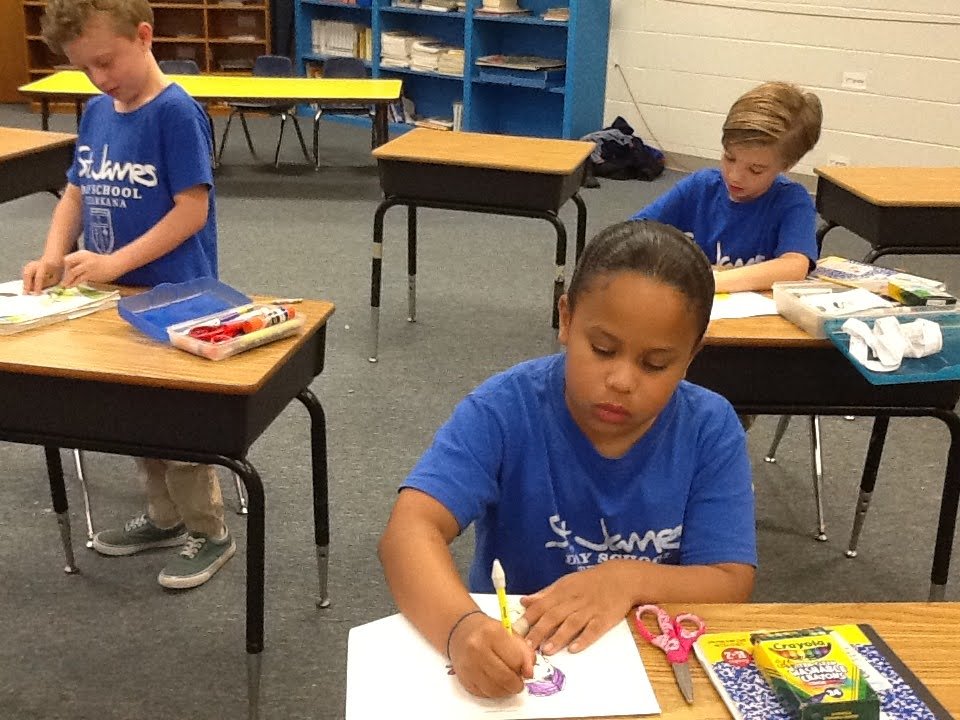


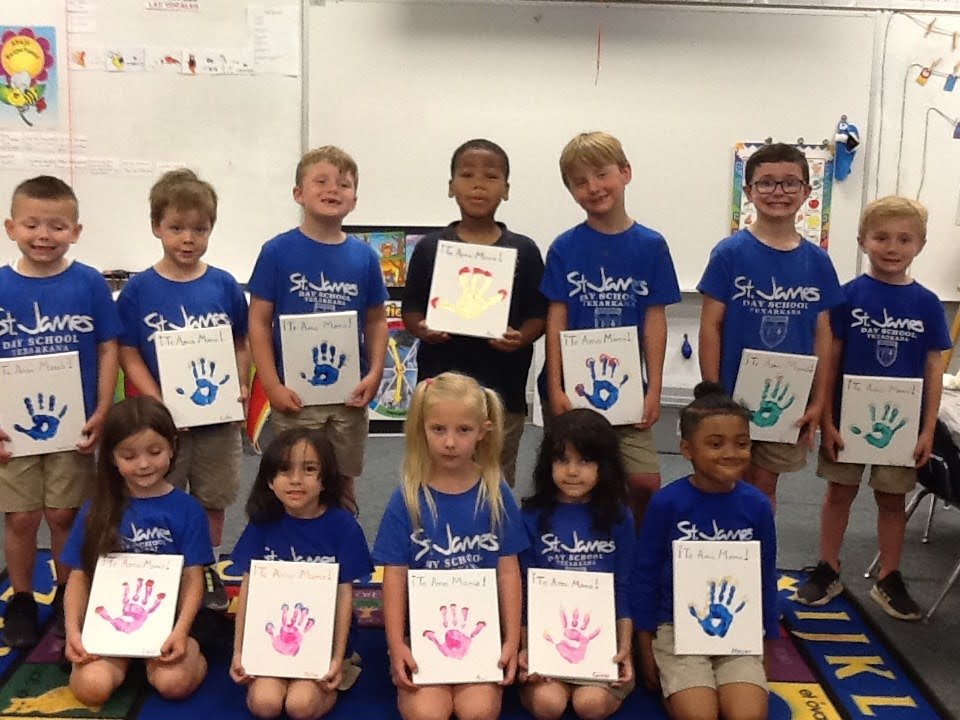






Students had fun writing and learning about the five senses in Spanish. Students learned the Spanish words for the five senses and then wrote sentences using the words they learned.
I can see with my eyes - Yo veo con mis ojos.
I can hear with my ears- Yo escucho con mis oídos.
I can smell with my nose- Yo huelo con mi nariz.
I can feel with my hands- Yo siento con mis manos.
I can taste with my tongue- Yo pruebo con mi lengua.



I’m proud of my fourth grade students. We are learning how to conjugate some infinitive verbs in Spanish. Students learned Spanish pronouns, and then, using these pronouns, learned to conjugate the infinitive verbs into present tense.





These students are learning the Spanish alphabet with some new vocabulary. Students are learning how to pronounce the words, and then coloring and gluing cutouts of the words in their notebook. Students were making fun of some of the words such as enojado, which means angry in Spanish.

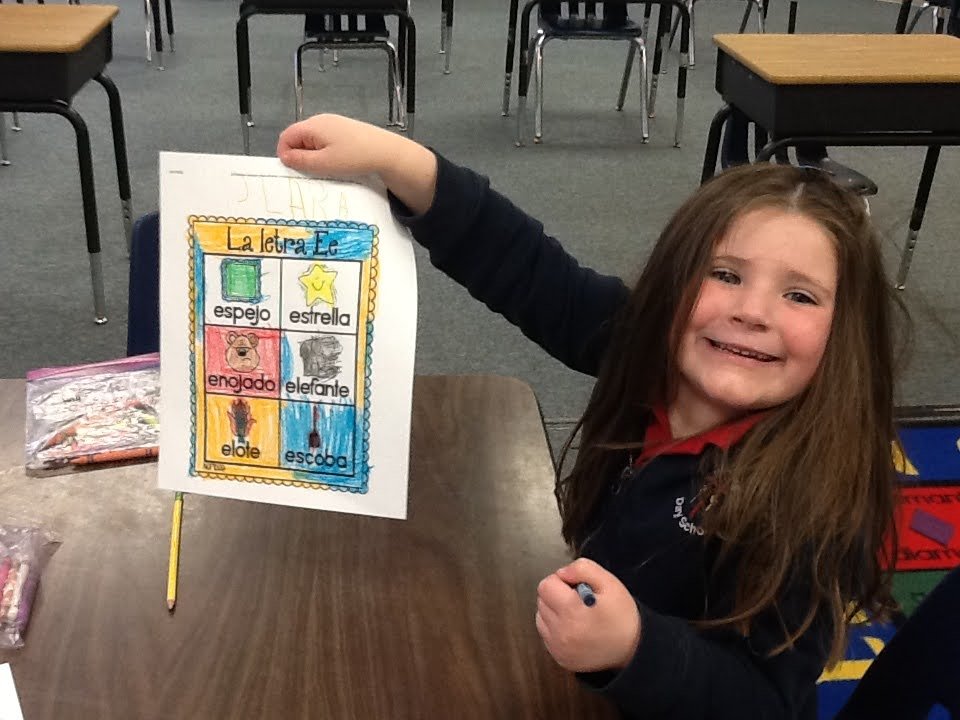







The students wanted to pay tribute to their grandparents. They prepared special sight words that meant a lot to them. They also learned some new songs in Spanish for their grandparents.
La canción de los colores
De colores:
De colores se visten los campos en la primavera
De colores:
de colores son los pajaritos que vienen de fuera
De colores:
de colores es el arco iris que vemos lucir
Y por eso los grandes amores de muchos colores me gustan a mi
Y por eso los grandes amores de muchos colores me gustan a mi
Canta el gallo: canta el gallo con el quiri quiri quiri quiri quiri quiri quiri quiri
La gallina: la gallina con el cara cara cara cara cara cara cara
Los pollitos: los pollitos con el pio pio pio pio pio pio pio pio pi
Y por eso los grandes amores de muchos colores me gustan a mi
Y por eso los grandes amores de muchos colores me gustan a mi.
The Song, Colorful
Colorful, colorful the country dresses in the Spring time
Colorful, colorful are the birds that come from far away
Colorful, colorful is the rainbow that we see shining
And that’s why great loves of many colors I like
The rooster sings, the rooster sings with the hen, the hen, the hen with the
The chicks, the chicks with the and that’s why the great loves
SALUDOS-GREETINGS
¡Hola! ¿Cómo estás?
Hello! How are you?
Muy bien, gracias
Very well, thank you
Mucho gusto, bienvenido
Nice to meet you, welcome
Hasta mañana
See you tomorrow
¡Adiós! ¡Adiós!
Goodbye!






Some students are learning a new vocabulary about family. The vocabulary that students are learning are the names of their family, including father, mother, brother, sister, grandpa, grandma, cousin, uncle, and aunt.
Other students are having fun learning the vowels. They can sing, dance, and write the vowels through music and dancing














Students learned yet another tradition that many countries, including Mexico, celebrate on January 6. On this day some Latin American countries celebrate Los Tres Reyes Magos like we celebrate Santa Claus on Christmas Day. My students and I watched a video about what happens on the day when the three Kings came to visit baby Jesus on January the 6th. The Three Kings (Los Tres Reyes Magos) bring gifts to children in many parts of the world. Children get up early in the morning on January 6th looking for gifts under their beds, inside their shoes, and or under their Christmas tree. In addition to receiving presents, children in some cultures decorate paper crowns and wear them along with a purple costume to parade as kings. The adults also have a tradition for the day around La Rosca. La Rosca is sweet bread in the shape of a wreath. Inside the bread is a little figurine of baby Jesus. Everyone watches as the adults cut a piece of bread for themselves. If their piece of bread contains the baby Jesus figurine, then they are responsible for having a party the next month. I hope you can imagine how these traditions can generate a lot of fun.
On January 6, I wanted my students to experience this tradition that many people still practice today. Some of my students were able to decorate of the crown, the cut the Rosca, and, of course, eat the sweet Rosca bread. They had fun learning about the Three Kings.
During the month of December, the students cut, colored, and learned some new vocabulary in Spanish. The new vocabulary that students learned to say were words such as frosty, mittens, left, right, nose, mouth, and eyes. During the month of December students also learned the lyrics of some Christmas songs such as Feliz Navidad. Also, some students learned what posadas and aguinaldo navideño are. Posadas are the reenactments of Mary and Joseph in Bethlehem searching for shelter for Mary to give birth. After the reenactment, children are given bags of candy and small toys. These bags with candy inside are called aguinaldos navideños.






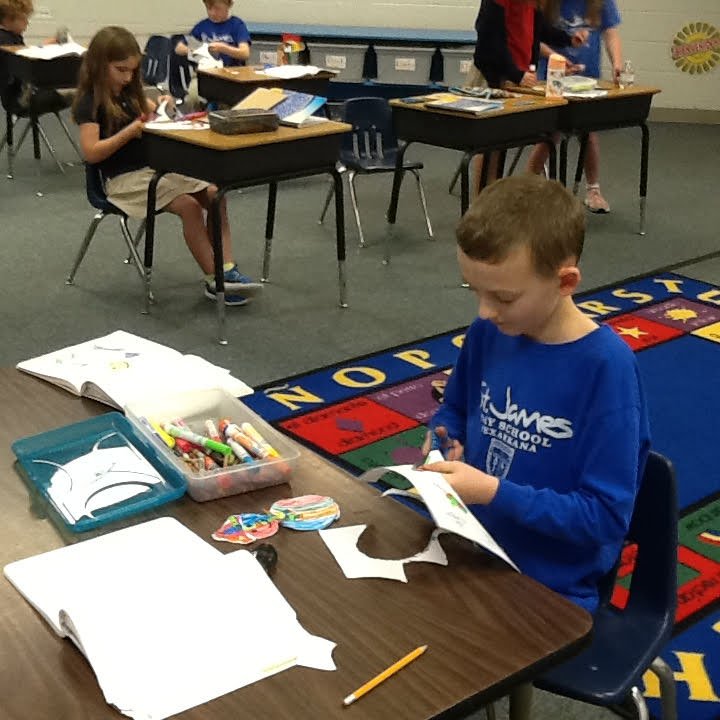









To learn something about about Mexican culture, St. James students made piñatas. Last Friday, November 19, students presented their piñatas to their classmates. Each one of the students worked hard on making their piñata. As students were making their piñatas, they also learned a new vocabulary in Spanish. Students were able to mention the names of the materials they used in Spanish during their presentation. After the students were done with their presentation, they enjoyed some Mexican food.
The following are some of the piñatas that the students made.
A watermelon (una sandía)
A pumpkin (una calabaza)
A banana (un plátano)
An apple (una manzana)
An avocado (un aguacate)
A cat (un gato)
A bone (un hueso)
A basketball (un baloncesto)
A soccer ball (un balón de fútbol)
A pig (un cerdo)
A falcon (un halcón)
The following are some of the materials that students used to make their piñatas.
Balloons (globos)
Newspaper (periódico)
Glue (pegamento)
Mache paper (papel maché)
Cardboard (cartulina/cartón)
Tissue paper (papel de seda)
Rope (soga/mecate)
Tape (cinta adhesiva)
A pair of scissors ( tijeras)


















Please take a look at the amazing pictures and see how the students are doing an incredible job making their piñatas. It may look messy and disorganized, but the students know what they are doing. When my other students came into the classroom, I heard them giggling as they were trying to guess what the piñatas were going to be when the students finish them.










Students are continuing to learn colors and numbers in Spanish. They are learning how to pronounce and write in Spanish. Also, students are learning how to tell time in Spanish, and how to ask what time it is.
What time is it? ¿Qué hora es?
It is ten o’clock. Son las diez de la mañana.
It is one o’clock. Es la una de la tarde.
It is eight o’clock. Son las ocho de la noche.






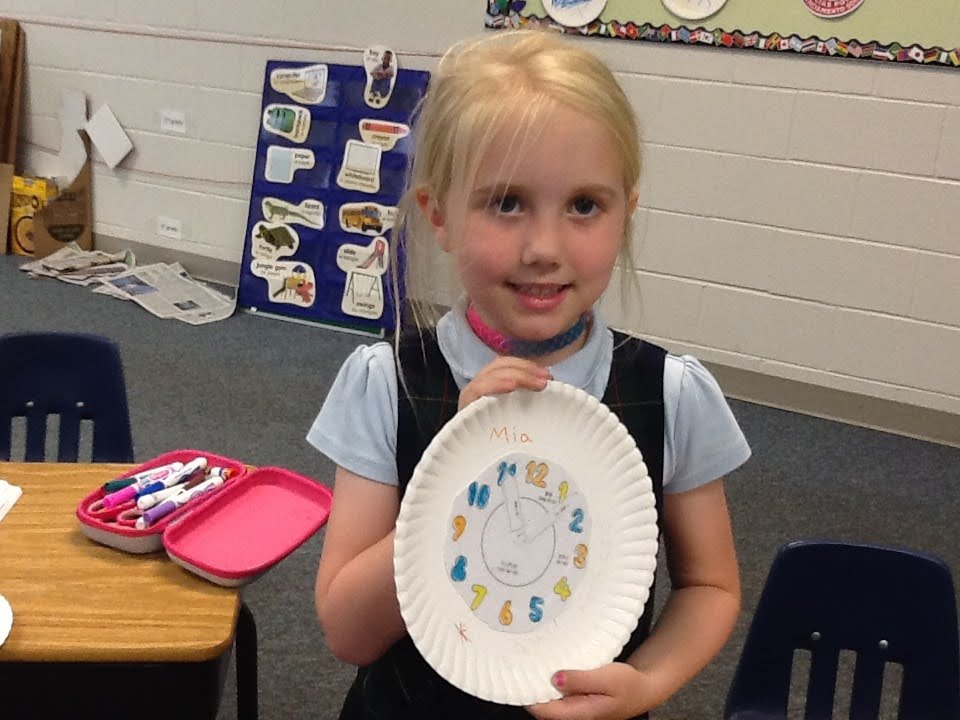

Students are learning some facts about the month of September, such as why the month of September is considered to be the Hispanic Heritage Month. September 16 is Mexican Independence Day. The Mexican people celebrate this day with friends and family as they remember Father Hidalgo’s famous “Shout from Dolores” that led to Mexican independence. The countries of Central America (Guatemala, El Salvador, Nicaragua, and Costa Rica) also celebrate their independence on September 16.
Students are learning the names of the countries that celebrate their independence day on September 16. They are also having fun drawing and coloring in the flags of these countries and learning a little about their history. How fun!







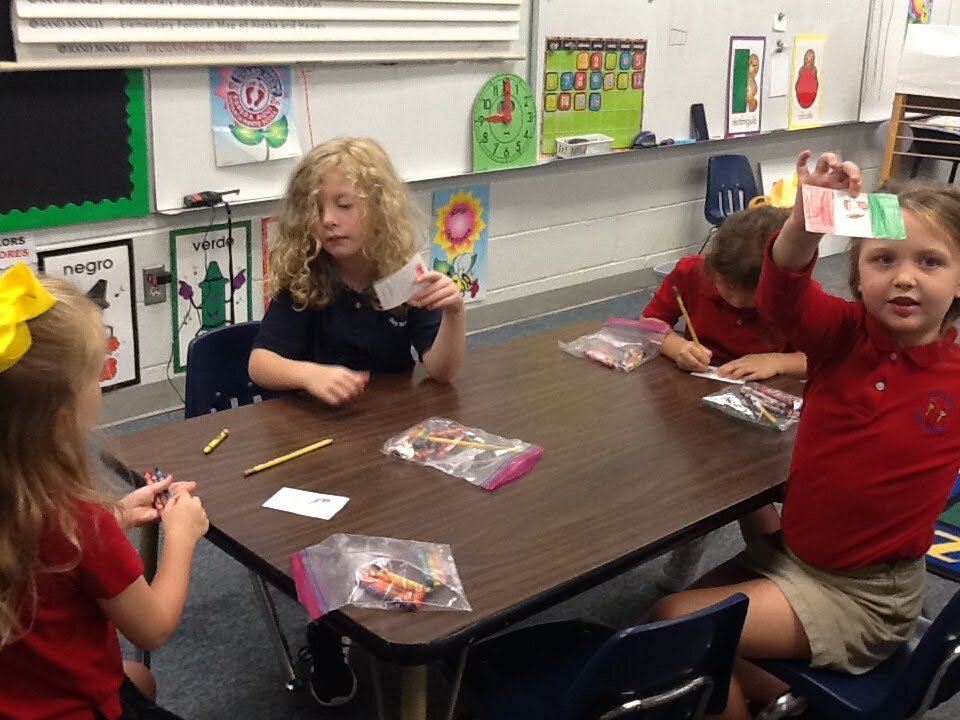














Students are learning some facts about the month of September, such as why the month of September is considered to be the Hispanic Heritage Month. September 16 is Mexican Independence Day. The Mexican people celebrate this day with friends and family as they remember Father Hidalgo’s famous “Shout from Dolores” that led to Mexican independence. The countries of Central America (Guatemala, El Salvador, Nicaragua, and Costa Rica) also celebrate their independence on September 16.
Students are learning the names of the countries that celebrate their independence day on September 16. They are also having fun drawing and coloring in the flags of these countries and learning a little about their history. How fun!






















Please take a look at these students who are eager and ready to learn Spanish.
The first couple of weeks we have learned quite a bit, including how to say in Spanish the students’ favorite
foods, books, songs, movies, pets, and colors.




















Students are learning how to pronounce some vowels in Spanish. For example, they are learning how to pronounce the sound of the first vowel in words such as abeja (bee) and elefante (elephant). They are also learning how to write down the upper and lowercase vowels.











Rhyming: Rimas
Students are learning to recognize consonants and vowels and how to use them to make rhymes. Learning the skill of rhyming words at this age will increase the students’ phonological awareness. The students are also learning to identify how many syllables are in some words. This learning process can be fun as well as educational.
Some examples:
Rimar-to rhyme Silabas- Syllables
Lago- mago - lago- 2
(lake)-(magician) mago- 2
Cascarón-limón cascaron- 3
(shell)- (lemon) limon - 2
Patito-pollito- patito- 3
(duckling)-(chick) Pollito- 3












The students are learning the irregular verb “to be” in Spanish. The verb “to be” is one of the common and important verbs in any language. Spanish has two verbs that translate into the English verb to be (ser and estar) The Spanish the verb ser is used to describe a person or a thing and their characteristics, while the verb estar is used to indicate the location of people, places and things.
For example:
Ser- to be:
Juan es un hombre americano fuerte y alto. John is an American man strong and tall.
Estar- to be:
Miguel está en el teatro. Mike is in the theater.










